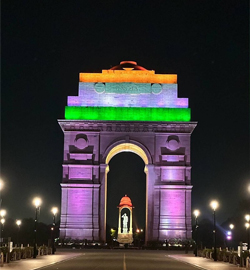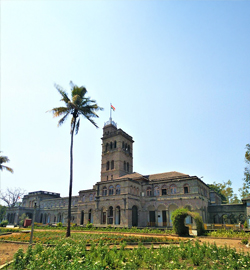Queries about this test
- Ans: The full form of DLC is Differential Leukocyte Count.
- Ans: The DLC test, also known as the differential leukocyte count test, is a blood test that determines the percentage of each type of white blood cell in your body. WBCs are vital components of our immune system and help fight off infections and diseases.
- Ans: A healthy person's DLC count should fall within a certain range: Neutrophils 40-60%, Lymphocytes 20-40%, Monocyte 2-8%, Eosinophil 1-4% and Basophil up to 1%.
- Ans: The DLC test procedure is a simple and painless blood test that can provide valuable information about the different types of white blood cells in your body. Before undergoing the test, you will need to inform your doctor if you are on any medications.
- Ans: Your DLC test results provide valuable information about the composition of your blood, specifically the levels of different white blood cells known as leukocytes. These cells play a crucial role in your body's immune system, helping to fight off infections and other harmful invaders.
Customer reviews
4 out of 5Review this test
Share your thoughts with others
How Does Home Sample Collection work?

Lab Tests Near You
-
Lab Test in Model Town
Lab Test in DLF Colony
Lab Test in Laxmi Nagar
Lab Test in Sector 2, Rohtak
Lab Test in Patel Nagar
Lab Test in Janta Colony
Lab Test in Sector 1, Rohtak
Lab Test in Sector 4, Rohtak
Lab Test in Partap Mohalla
Lab Test in Kathura
Lab Test in Dobh
Lab Test in Karontha
Lab Test in Jhajjar Road
Lab Test in Sector 1, Rohtak
Lab Test in Sector 34, Rohtak
Lab Test in Sector 27, Rohtak
Lab Test in Sector 4, Rohtak
Lab Test in Arya Nagar
Lab Test in Kanheli
Lab Test in Sector 25, Rohtak
Lab Test in Sector 26, Rohtak
Lab Test in Sector 28, Rohtak
Lab Test in Suncity 2
Lab Test in Rajendra Nagar
Lab Test in Para Mohalla
Lab Test in Shiv Nagar
Lab Test in Singhpura
Lab Test in Suncity 1
Lab Test in Bohar
Lab Test in Garhi Bohar
Lab Test in Baliana
DLC Test Near You
-
DLC Test in Model Town
DLC Test in DLF Colony
DLC Test in Laxmi Nagar
DLC Test in Sector 2, Rohtak
DLC Test in Patel Nagar
DLC Test in Janta Colony
DLC Test in Sector 1, Rohtak
DLC Test in Sector 4, Rohtak
DLC Test in Partap Mohalla
DLC Test in Kathura
DLC Test in Dobh
DLC Test in Karontha
DLC Test in Jhajjar Road
DLC Test in Sector 1, Rohtak
DLC Test in Sector 34, Rohtak
DLC Test in Sector 27, Rohtak
DLC Test in Sector 4, Rohtak
DLC Test in Arya Nagar
DLC Test in Kanheli
DLC Test in Sector 25, Rohtak
DLC Test in Sector 26, Rohtak
DLC Test in Sector 28, Rohtak
DLC Test in Suncity 2
DLC Test in Rajendra Nagar
DLC Test in Para Mohalla
DLC Test in Shiv Nagar
DLC Test in Singhpura
DLC Test in Suncity 1
DLC Test in Bohar
DLC Test in Garhi Bohar
DLC Test in Baliana
Popular Tests in Huda Complex
-
Cbc Test Price in Huda Complex
D Dimer Test Price in Huda Complex
Pregnancy Test Price in Huda Complex
Widal Test Price in Huda Complex
Hba1C Test Price in Huda Complex
Lipid Profile Test Price in Huda Complex
Lft Test Price in Huda Complex
Thyroid Test Price in Huda Complex
Ferritin Test Price in Huda Complex
Tsh Test Price in Huda Complex
Double Marker Test Price in Huda Complex
Creatinine Test Price in Huda Complex
Fbs Test Price in Huda Complex
Dengue Test Price in Huda Complex
Uric Acid Test Price in Huda Complex
Urine Culture Test Price in Huda Complex
Kft Test Price in Huda Complex
Vitamin D Test Price in Huda Complex
Haemoglobin Test Price in Huda Complex
Vitamin B12 Test Price in Huda Complex
KFT Test Price in Huda Complex
Popular Packages in Huda Complex
-
Full Body Health Checkup Package in Rohtak
Pregnancy Test Package in Huda Complex
Arthritis Test Package in Huda Complex
DNA Test Package in Huda Complex
Allergy Test Package in Huda Complex
Thyroid Test Package in Huda Complex
Liver Function Test Package in Huda Complex
HIV Test Package in Huda Complex
Kidney Test Package in Huda Complex
PCOS Test Package in Huda Complex
Lipid Profile Test Package in Huda Complex
Infertility Test Package in Huda Complex
Vitamin D Test Packages in Huda Complex
Antenatal Test Package in Huda Complex
Blood Sugar Test Package in Huda Complex
Lab Tests in Other Cities
-
Lab Test in Delhi
Lab Test in Rohtak
Lab Test in Hisar
Lab Test in Gohana
Lab Test in Mohali
Lab Test in Chandigarh
Lab Test in Panchkula
Lab Test in Jalandhar
Lab Test in Ludhiana
Lab Test in Amritsar
Lab Test in Dehradun
Lab Test in Haridwar
Lab Test in Rishikesh
Lab Test in Rudrapur
Lab Test in Saharanpur
Lab Test in Noida
Lab Test in Gurgaon
Lab Test in Faridabad
Lab Test in Ghaziabad
Lab Test in Mumbai
Lab Test in Bathinda
Lab Test in Lucknow
Lab Test in Gwalior
Lab Test in Sonipat
Lab Test in Meerut
Lab Test in Pune
Lab Test in Haldwani
Lab Test in Patiala
Lab Test in Panipat
Lab Test in Roorkee
Lab Test in Kanpur
Lab Test in Rewari
Lab Test in Muzaffar Nagar
Lab Test in Varanasi
Lab Test in Ambala
Lab Test in Agra
Lab Test in Mathura
Lab Test in Sirsa
Lab Test in Khanna
Lab Test in Jaipur
Lab Test in Udaipur
Lab Test in Jodhpur
Lab Test in Bengaluru
Lab Test in Hyderabad
Lab Test in Chennai
Lab Test in Nagpur
Lab Test in Ahmedabad
Lab Test in Karnal
Lab Test in Kolkata
Lab Test in Patna
Lab Test in Moradabad
Lab Test in Aligarh
Lab Test in Pathankot
Lab Test in Firozpur
Lab Test in Bhopal
Lab Test in Guwahati
Lab Test in Bhubaneswar
Lab Test in Hoshiarpur













 7982100200
7982100200




 Test Name
Test Name  Also Known as
Also Known as  Sample Type
Sample Type  Gender
Gender  Age group
Age group  This Test Includes
This Test Includes  Price
Price@3x.png)








 To reach our help desk call 9213188888
To reach our help desk call 9213188888.png)